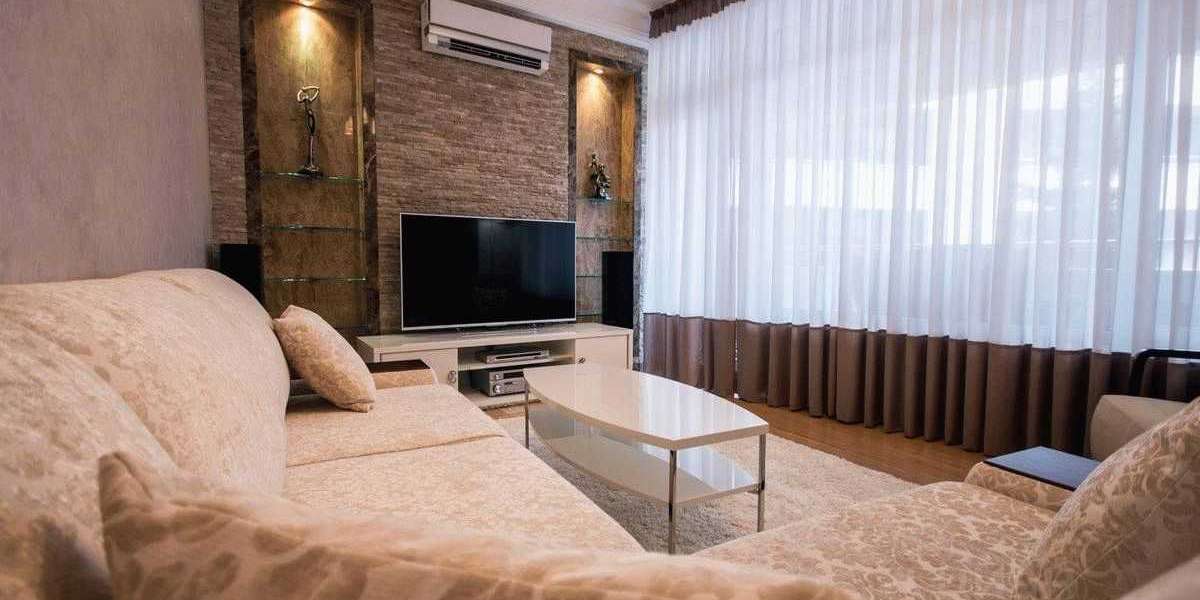In today's competitive business landscape, commercial air conditioning isn't just a comfort—it’s a strategic asset. Whether you're managing an office complex, retail store, data center, or healthcare facility, indoor climate control directly impacts employee productivity, customer experience, and even equipment performance. Choosing the right system can reduce energy bills by up to 40%, extend equipment life, and enhance indoor air quality (IAQ).
Let’s break down everything you need to know to make an informed decision.
? What Is a Commercial Air Conditioner?
A commercial air conditioner is a large-scale HVAC system designed to cool (and often heat) non-residential spaces. Unlike residential units, these systems handle larger spaces, more complex ductwork, and higher usage demands.
? Quick Comparison Table: Types of Commercial AC Systems
| System Type | Ideal For | Cooling Capacity (BTU/h) | Energy Efficiency | Installation Cost Range (USD) |
|---|---|---|---|---|
| Split Systems | Small offices, shops | 24,000–60,000 | High | $3,000–$10,000 |
| Packaged Rooftop Units | Warehouses, malls | 3–25 tons | Medium–High | $5,000–$25,000+ |
| Variable Refrigerant Flow | Hotels, mixed-use buildings | Up to 120,000+ | Very High | $15,000–$50,000+ |
| Chillers | Hospitals, industrial sites | 100,000+ | High (with upgrades) | $50,000–$500,000+ |
| Ductless Mini-Split Systems | Server rooms, small zones | 12,000–36,000 | Very High | $2,000–$8,000 |
? Key Features to Look For
When selecting a commercial air conditioner, consider the following:
Energy Efficiency Ratio (EER) and Seasonal Energy Efficiency Ratio (SEER)
Zoning capability
Smart thermostats controls
Indoor Air Quality (IAQ) enhancements
Noise levels (measured in dB)
Warranty coverage (typically 5–10 years)
⚙️ How Commercial Systems Work (Simplified)
Air Intake – Pulls in air from the indoor environment.
Cooling Coil – Uses refrigerant to cool the air.
Blower Fan – Circulates cooled air throughout the space.
Exhaust System – Removes excess heat and moisture.
Thermostat Control – Maintains desired temperature via feedback loops.
Pro Tip: Systems using inverter compressors adjust their speed to save energy, compared to fixed-speed models.
✅ Benefits of Commercial Air Conditioning
? Consistent Climate Control
? Lower Long-Term Operational Costs
? Sustainability with Eco-Friendly Refrigerants (e.g., R-410A, R-32)
? Flexible Configurations for Any Floor Plan
?? Enhanced Workforce Productivity
? Increased Tenant or Customer Retention
? Expert Insights: Choosing the Right System
Consider Your Space Type:
Open-plan offices: VRF or split systems for zoning
Retail stores: Rooftop packaged units
Data centers: Precision cooling with high reliability
Multi-tenant buildings: Ductless or modular systems
Load Calculation Matters
A Manual J or D load calculation determines exact BTUs needed based on:
Square footage
Insulation levels
Window types
Number of occupants
Equipment heat load
Oversized systems waste energy. Undersized units underperform. Always size precisely.
? FAQ Section: Get the Answers You Need
❓ What’s the difference between residential and commercial AC?
Commercial systems are larger, modular, and customizable. They often include multi-zone controls, advanced filtration, and greater durability.
❓ How often should a commercial AC be serviced?
Ideally, twice a year—once before peak cooling season and once after. Preventive maintenance improves energy efficiency by up to 15%.
❓ Are VRF systems worth the investment?
Yes, especially for buildings with variable occupancy or multiple zones. VRF systems offer up to 30% energy savings compared to traditional systems.
❓ Can I retrofit my existing system?
In many cases, yes. Retrofit options like smart thermostats, economizers, or higher-efficiency coils can upgrade older systems without full replacement.
❓ How long do commercial systems last?
Average lifespan ranges from 15 to 25 years, depending on maintenance, usage intensity, and system type.
? Energy Efficiency: What to Know
Energy Star Certification
Look for Energy Star-rated commercial systems. They consume 8–10% less energy, reducing operational costs substantially over time.
SEER and EER Ratings
SEER (Seasonal): Measures cooling output vs. energy used over a season.
EER (Instantaneous): Focuses on performance under peak load.
Ideal SEER rating for commercial systems: 14–21
? Maintenance Checklist for Business Owners
Keep your investment running smoothly with this checklist:
✅ Change air filters monthly
✅ Inspect ductwork quarterly
✅ Calibrate thermostat regularly
✅ Clean condenser and evaporator coils bi-annually
✅ Monitor refrigerant levels
✅ Check for unusual noises or vibrations
✅ Schedule professional tune-ups twice a year
? Pro Buyer Tips from Industry Experts
“When comparing bids, don’t just look at the install price. Evaluate the life cycle cost, including maintenance, energy use, and warranty.”
— HVAC Engineer, 20+ years of experience
“Smart integration with building management systems (BMS) is a game changer. Choose units that support IoT or BACnet protocols.”
— Facility Manager, Corporate Campus
? Real Use-Case: Office Building Upgrade Example
A 20,000 sq. ft. office building in a warm climate replaced its outdated split systems with a VRF system. Results:
Energy savings: $12,000 annually
ROI achieved: In under 4 years
Indoor comfort: Improved zone by zone
Noise levels: Reduced by 50%
? Top Brands to Watch in Commercial AC
Here’s a list of brands recognized for durability, innovation, and after-sales support:
Daikin
Carrier
Trane
Mitsubishi Electric
LG HVAC
Lennox Commercial
? Checklist Before Buying
Before committing, ask these questions:
What’s the cooling load requirement for my space?
What’s the total cost of ownership, not just installation?
Does the system qualify for government or utility rebates?
Can it integrate with existing ductwork or smart systems?
What’s the manufacturer’s warranty and maintenance coverage?
Would you like help comparing specific models or understanding installation costs in your region?








